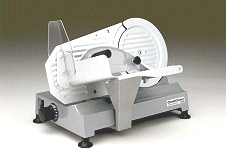Listeria monocytogenes is a pathogenic bacterium associated with RTE meat products sold at the retail level. The objective of this research was to determine the prevalence of Listeria monocytogenes in RTE meat products sold at retail in Costa Rica and to study the factors associated with the levels of contamination; analyzed factors include hygienic practices within stores (cutting techniques, microbial contamination of products) and the behavior of the isolates (persistence against antimicrobials and transfer potential).
 A total of 190 samples of RTE meat products were collected and analyzed for the presence of coliforms and Listeria species. Isolates of L. monocytogenes were then evaluated in terms of resistance to disinfectants (quaternary ammonium compounds and chlorine) and their transfer potential from food contact surfaces (knife and cuttingboards). Overall Listeria spp. prevalence was 37,4% (71/190); L. innocua was present in 32,1% (61/190) of the products and L. monocytogenes was found in just 2,6% (5/190) of the samples. Most of the contaminated samples were cut with a knife at the moment of purchase (44,2%). When analyzing practices within the stores, it was observed that L. monocytogenes transfer from inoculated knife to “salchichón” was higher for samples cut right at the beginning of the experiment. Also, L. monocytogenes transfer from inoculated cuttingboards was independent of the number of slices but contamination from plastic was higher than wood. Regarding L. monocytogenes resistance to disinfectants, average reductions of 2,6 ± 1,1 log CFU/mL were detected after 6 minutes of exposure to 200 ppm of chlorine; however, chlorine resistance varied among the strains. Prevalence of L. monocytogenes in RTE meat products sold at retail could be associated with handling practices within the stores; further studies are necessary to estimate the impact of these practices on the overall risk for consumers.
A total of 190 samples of RTE meat products were collected and analyzed for the presence of coliforms and Listeria species. Isolates of L. monocytogenes were then evaluated in terms of resistance to disinfectants (quaternary ammonium compounds and chlorine) and their transfer potential from food contact surfaces (knife and cuttingboards). Overall Listeria spp. prevalence was 37,4% (71/190); L. innocua was present in 32,1% (61/190) of the products and L. monocytogenes was found in just 2,6% (5/190) of the samples. Most of the contaminated samples were cut with a knife at the moment of purchase (44,2%). When analyzing practices within the stores, it was observed that L. monocytogenes transfer from inoculated knife to “salchichón” was higher for samples cut right at the beginning of the experiment. Also, L. monocytogenes transfer from inoculated cuttingboards was independent of the number of slices but contamination from plastic was higher than wood. Regarding L. monocytogenes resistance to disinfectants, average reductions of 2,6 ± 1,1 log CFU/mL were detected after 6 minutes of exposure to 200 ppm of chlorine; however, chlorine resistance varied among the strains. Prevalence of L. monocytogenes in RTE meat products sold at retail could be associated with handling practices within the stores; further studies are necessary to estimate the impact of these practices on the overall risk for consumers.
Presence of listeria monocytogenes in ready-to-eat (RTE) meat products sold at retail stores in Costa Rica and analysis of contributing factors, 2021
Journal of Food Protection
Karol Calvo-Arrieta 1, Karol Matamoros-Montoya 1, María Laura Arias-Echandi 1, Alejandra Huete-Soto 1, Mauricio Alberto Redondo-Solano 2
doi: 10.4315/JFP-21-020











